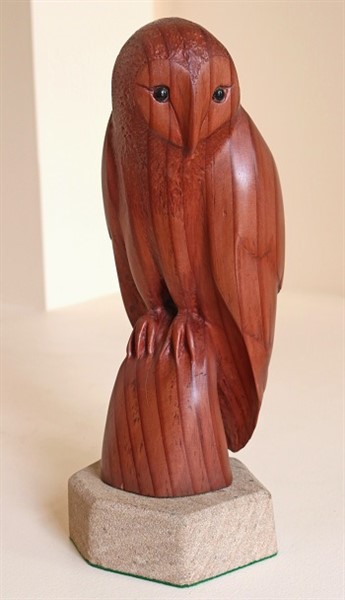 Last year, our 11 year old granddaughter came across a picture of this barn owl that I had carved for our last exhibition and was very sad that it had been sold.
Last year, our 11 year old granddaughter came across a picture of this barn owl that I had carved for our last exhibition and was very sad that it had been sold.
This seemed a useful lead for a possible Christmas present, so I quietly tried to find out what sort of owls she liked. As it turned out, she was something of an owl aficionado, mostly from her extensive knowledge of the fine details of the Harry Potter novels in which owls apparently play a major role in delivering letters and performing other essential services in the aid of magic.
One thing of which she was quite sure that was that her favourite member of the squadron was the Great Horned Owl. This presented another challenge – my first owl had been semi abstract – mostly because I wanted it that way, – my main aim was to try to capture the quizzical over the shoulder look…..
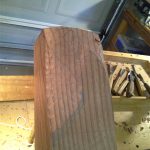
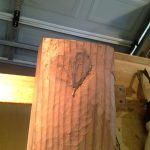
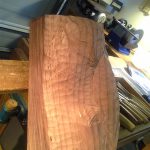
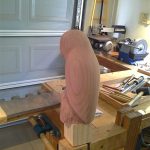
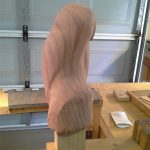
I would have to admit however that the semi-abstract format also gave me the ideal excuse for avoiding the tricky problem of carving feathers. So the next task was to find out what a Great Horned Owl really looked like and how to carve the fine details. Fortunately there are a couple of really useful reference sources: The Illustrated Owl by Denny Rogers and Owls by the doyen of bird of prey carvers Floyd Scholtz . His instructional video showing how to use rotary power tools is also well worth the $4 cost.
So, armed with all this advice I set about a fine piece of Chilean myrtle as shown below. I marked out all the key shapes and landmarks very carefully and cut out the basic blocks with a band saw. One useful piece of advice when carving heads, whether of humans or other animals, is not to cut down to the the back of the piece until you’re absolutely sure that the front view is OK – it’s hard if not impossible to correct any frontal errors by re-cutting if you’ve already defined the limits of the back and taken away any spare wood.
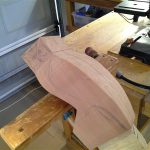
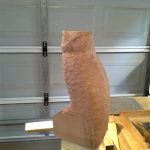
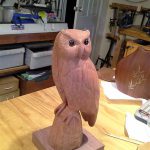
The feathers proved a challenge despite all the advice and video instruction. I managed some of it with rotary tools but mostly I used small v-chisels and lino cut gouges, ruby burrs and thin cones of sandpaper.
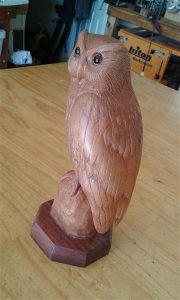
The final version seemed of fit the bill and now stands guard in her bedroom in Wyoming
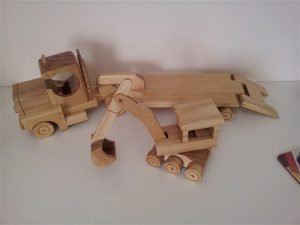
A enterprise of this sort was unlikely to go unnoticed by her 6yr old bother of course, so I turned again to that essential reference for all grandparent woodworkers with small grandsons who prefer trucks and military hardware to wildlife: Norm Marshall’s Great Book of Wooden Toys. The detailed plans he provides are very easy to follow or modify to taste as I had done for an earlier present in the shape of a low loader and earth mover.
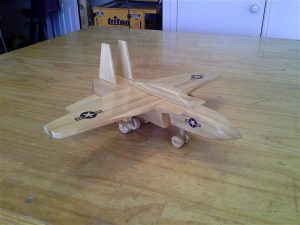 On this occasion a well armed jet fighter was clearly needed to deter any dastardly owlish tricks.
On this occasion a well armed jet fighter was clearly needed to deter any dastardly owlish tricks.
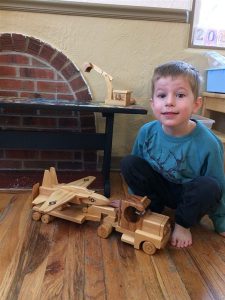
… and it even fitted on the low-loader.